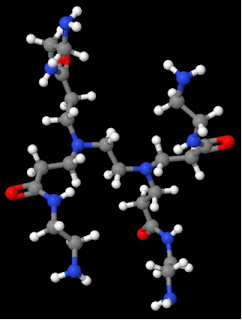Dendrimeric nanocomposites for solid phase microextraction

Polymeric nanocomposites have demonstrated great potential as sorbents in analytical sample preparation. The polymeric domain usually provides the sorption ability while the nanometric element confers special properties (like magnetism) or improves the sorptive capacity introducing new interaction chemistries (different than those provided by the polymer) or increasing the superficial area of the nanocomposite. In a recent article published in Microchimica Acta by Prof. Bagheri and coworkers, a reference research group in this field, have outlined the use of dendrimeric nanocomposites as sorptive phases in solid-phase microextraction (SPME). Dendrimers are hyperbranched molecules with a multifunctional, homogeneous and spherical surface. They present multiple sites on the outer surface that may interact with the target analytes. PAMAM dendrimer ethylene diamine core, generation 0. Source: chemspider.com Polyamidoamine (PAMAM) dendrimers can be obtained by a controlled and st


